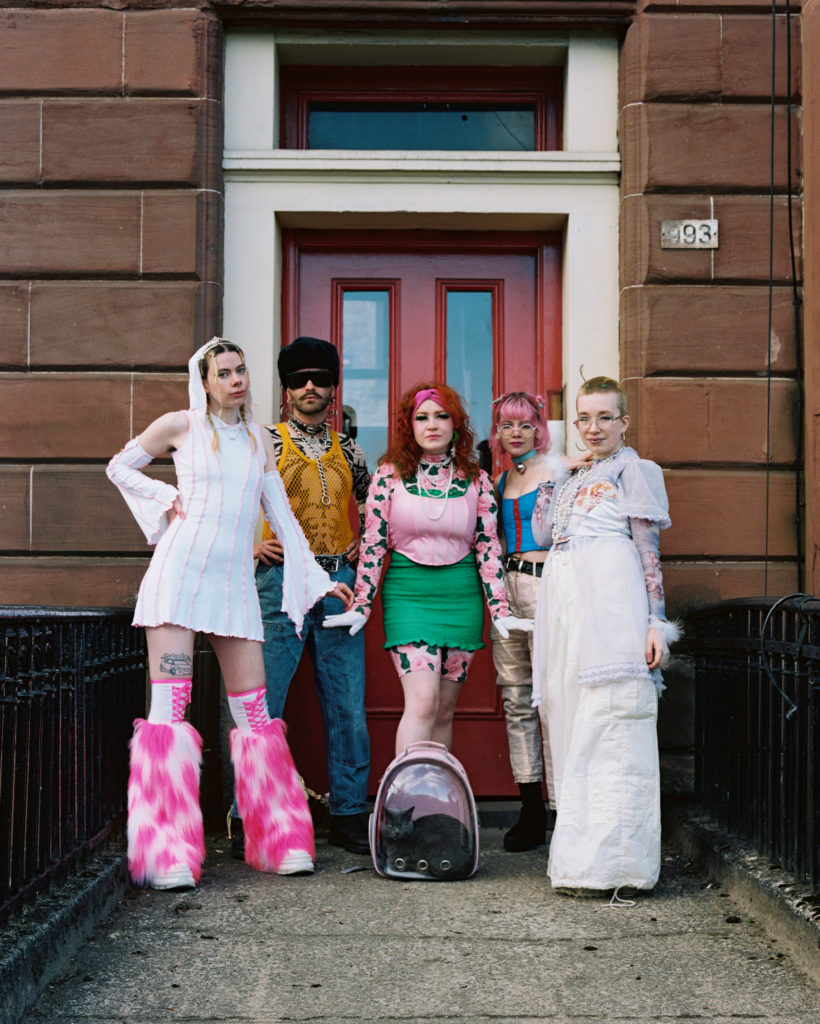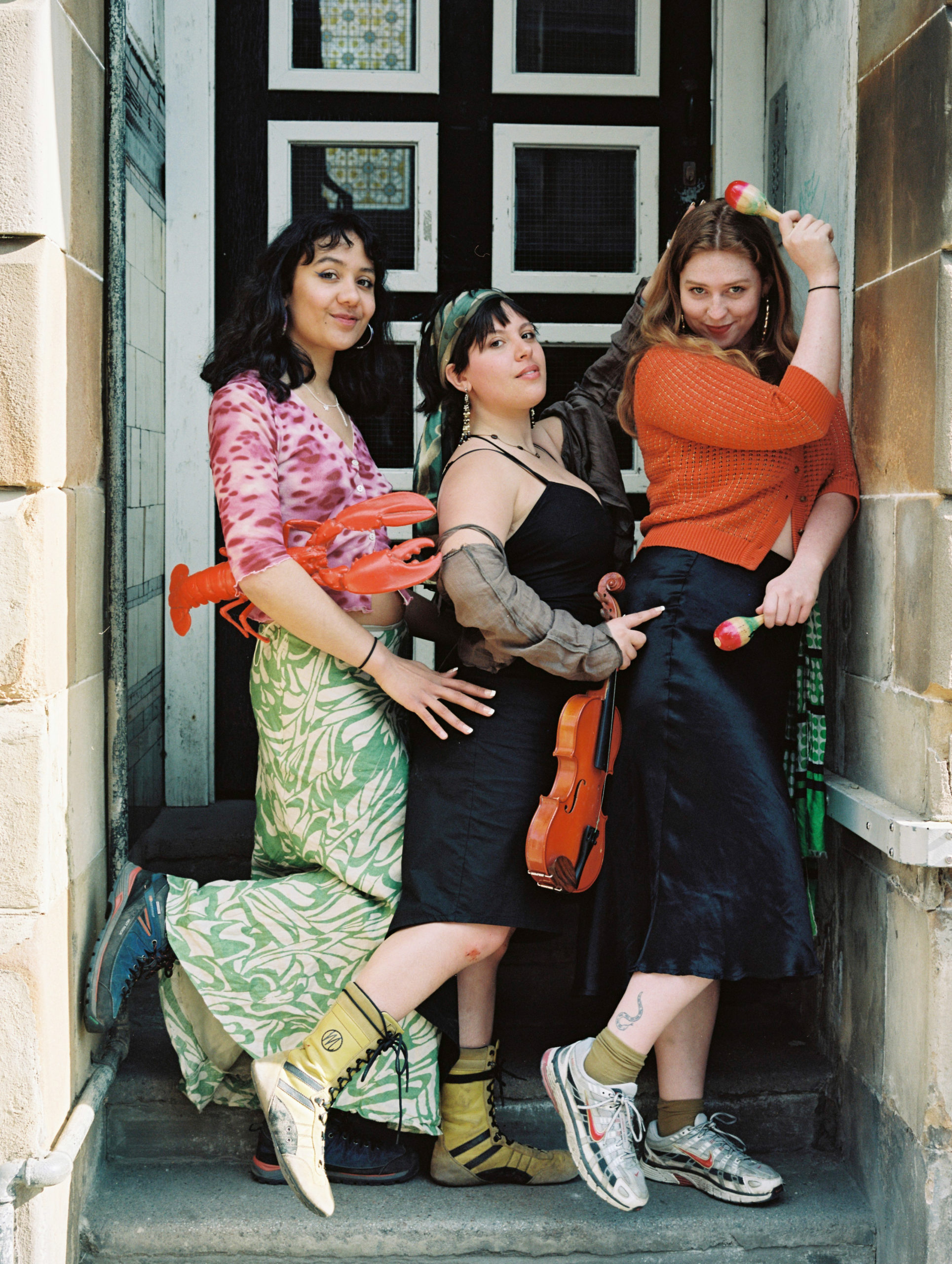An interview with Anna-Rose McChensey
Dylan Richards (he/him) and Nina Halper (she/her)
What’s your favourite outfit to dance in? is a Glasgow-based project by photographer Anna-Rose McChensey, which started back in the midst of the 2021 Covid pandemic. Anna-Rose, in taking upwards of 120 photographs, provided an opportunity for collective expression that had for so long been repressed. The concept was borne out of Anna-Rose’s love of clothing, dancing, and how clubbing was always a way for her to escape the demands of art school. And so, she decided to capture the student community in their favourite clubbing clobber. Glasgow’s iconic tenements provide the backdrop to all of the portraits; the Victorian flats, once only our homes, quickly became our gyms, universities, cinemas and clubs throughout lockdown.
Over a year and a half later, in the ‘post-pandemic’ world, Anna-Rose has compiled the series into a beautifully designed book, What’s your favourite outfit to dance in? with help from graphic designer Tom Ive. To celebrate its publication, she is holding a book launch at Saramago on the 17th of November between 6-12, where she hopes the community she captured on her Mamiya 645 will, finally, come together for a big party in their favourite dancing outfits.
On a coldwetgrey Wednesday we invited Anna-Rose over to hear her thoughts and reflections on the project. Leaving Tesco armed with a fine selection of biscuits, we returned to the flat where Anna-Rose was already outside waiting, taking shelter from Glasgow’s elements. After a few ‘sorrys’, ‘oh no, please don’t worry’s’, and a conciliatory ‘we should have been better prepared,’ we land in the living room. We find ourselves sitting across from each other drying out and warming up, two teas for us and Anna-Rose with her flask of we-don’t-know-what.
Nina: When you started this project, did you know it was going to take off the way it did? I mean, it essentially turned into a community project.
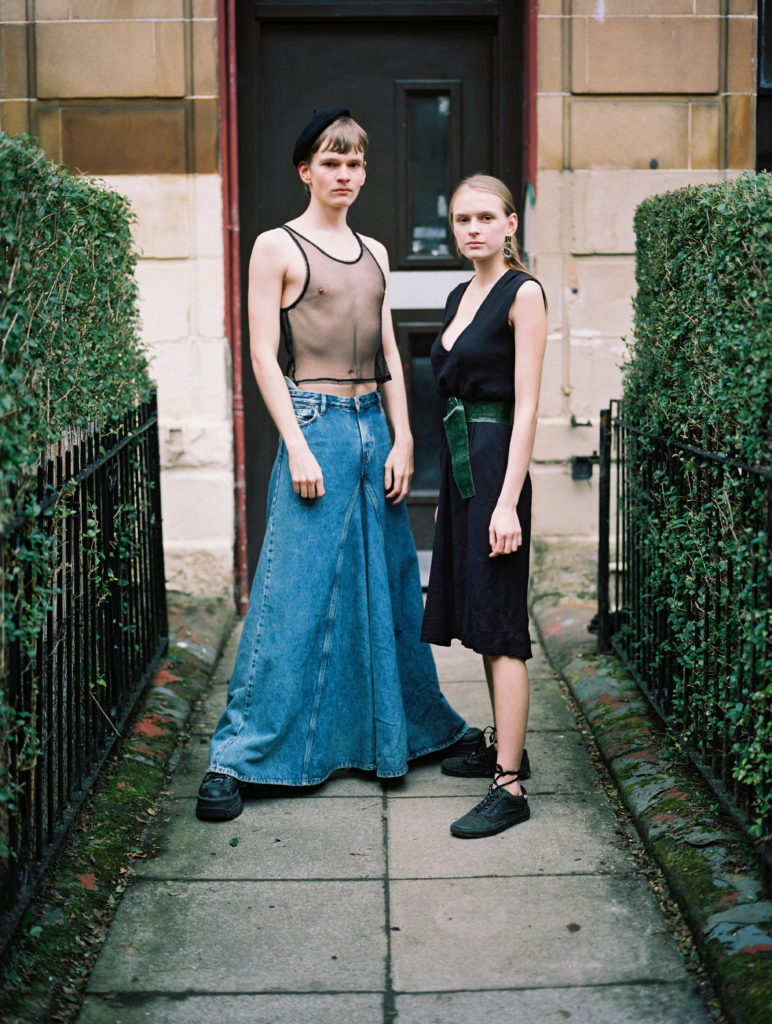
Anna: I started the project with my tutor at the art school. The initial idea was only to take three portraits. At first, it was going to be one photo outside, one inside, and one self portrait. The first ever image I did for this series was of my friends Lena and Luca. I thought ‘Okay, we can’t go outside, we can’t go out clubbing, we can’t go dancing or meet anyone, so let’s just put them in a composed composition outside their flat’. That was the external portrait. And then, for the internal portrait, I took some photos of my friend looking at a window, but it wasn’t really saying anything to me. And then for the self-portrait, well… I didn’t enjoy taking my self-portrait. What I knew was that I enjoyed taking the external portrait, and it meant I could go out and see my friends. It also gave them an opportunity to dress up.
And that’s when I thought: ‘Okay, maybe I’ll take another one’. I contacted five friends who fancied getting their picture taken, grabbed my roll of film and headed out. I saw the images and I really liked them. And that’s when I realised I could do more. I actually had other art school projects that were taking place at the time. So What’s your favourite outfit to dance in? was my ‘enjoyment project’.
I started posting the photos on Instagram, and then friends, and friends of their friends, would ask me if I could take their flat portrait. With this reaction from friends and strangers, I realised the project was capturing the zeitgeist of this peculiar time for lots of students in Glasgow. A lot of people were a long way away from home. We were in our flats. These were our homes for two years of lockdown and the people that we were with in those times. So it was essentially a portrait of what was going on. And these photos are evidence of something that did really happen.
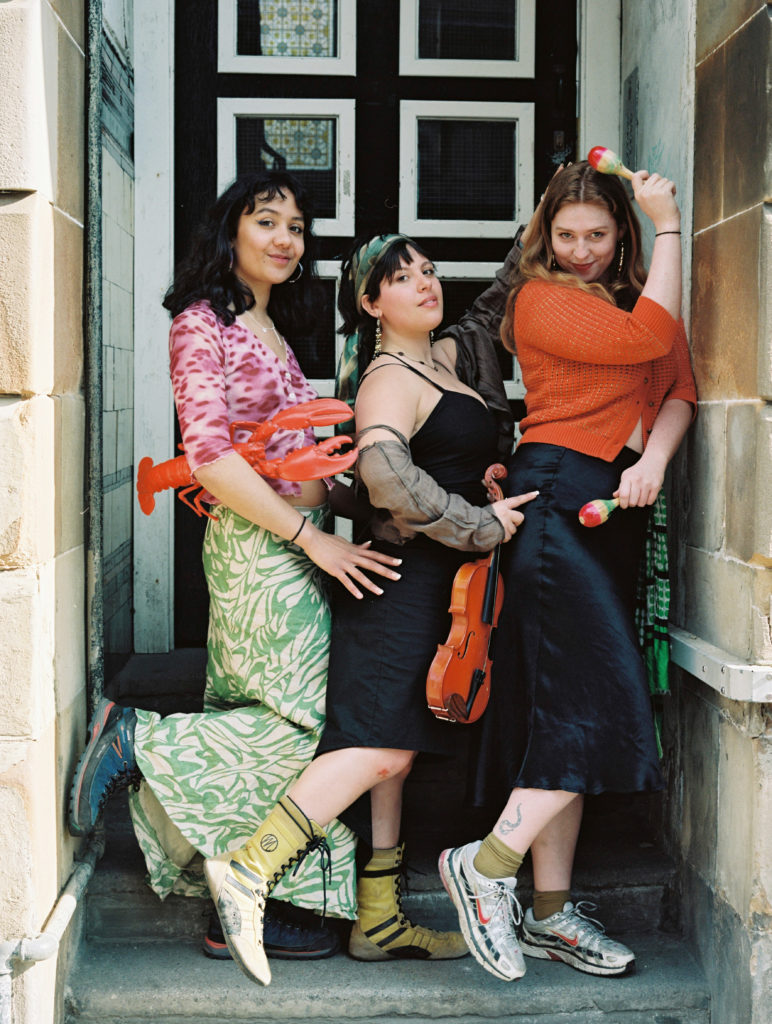
Dylan: Definitely. Whenever I look back at this collection of photographs, even 20 or 30 years from now, I’m sure it’ll take me back to that lockdown, but more generally to that time in my life. I was looking through the photos recently and what caught me off guard was how you’ve actually captured people we’ve lost. Victor Hugo, especially.
Anna: Yeah, I was showing the book to a friend recently and I thought ‘You know what? We’ve actually lost someone in this book, in this amount of time.’ Victor was such a vibrant person around Glasgow. I feel like a lot of the people in the book knew Victor. I’ve put a little note in the beginning of the book, a ‘for Victor’. It’s a memento for him. It’s nice to have it for him and everyone in Glasgow.
Nina: How do you feel now about the project looking back with a ‘post-Covid’ perspective?
Anna: Well, I was at art-school but we were studying online. I was struggling a lot. Damn, I really really missed seeing people in the studio and learning from them. So it was a way for me to do it for myself and navigate that. I was yearning for a sense of community. My tutor reminded me that, whilst it’s definitely a community project, I was also not to be a voyeur. I was part of that community. I am a part of that community. I am also a student within the community and I am photographing.
Nina: Do you think in the future, you’ll want to work with this kind of responsive and community-based art?
Anna: Yeah. I like the relationships between people. I’m interested in social anthropology and ethnography, different groups of people and where they sit in society. Portraiture is something that I really enjoy. Meeting the person that you’re photographing and finding out what they’re about.
Dylan: How do you find working collaboratively with other creatives? The initial project was your own vision of course, so how did you find relinquishing some of that control with the graphic designer, Tom Ive, to create the book?
Anna: I really enjoyed it. I loved all the photos I’d taken and just wanted to pop it over to Tom and give him autonomy. He knows what he’s doing in terms of layout and book design; he’s really knowledgeable about making publications. But more generally, in the studio, with the other people on my course, we often have criticisms where we look at each other’s work and give feedback. It’s important to be able to bounce off what they think can be improved.
Dylan: In terms of your approach, now you’re blessed with hindsight, is there anything you feel could have improved this project?
Anna: I maybe could have taken less photos. I did have other projects at university at the time. Maybe I should have stopped at 50, but you just get carried away. Sometimes I crammed in three or four different flats a day! Because I was working with one roll of film in my Mamiya 645, you’ve only got 12 or 15 images per roll, and you don’t want to be having 12 images on one roll with the same group of people, because that’s expensive. But I do like the film, the colours are really nice. Perhaps I could have condensed it a bit more, maybe done one portrait a day. Sometimes I’d be quite quick turning up to flats and I couldn’t give people the time that I should have. But, it was a big learning experience. It was a lesson in meeting strangers, turning up and photographing them, making sure I made them feel at ease in front of a camera. It can be such a daunting experience when this piece of machinery is right in front of you. I personally don’t like getting my photo taken that much. I don’t think I’d know what to do unless someone was creating an atmosphere or giving you the opportunity to design what you want to look like.
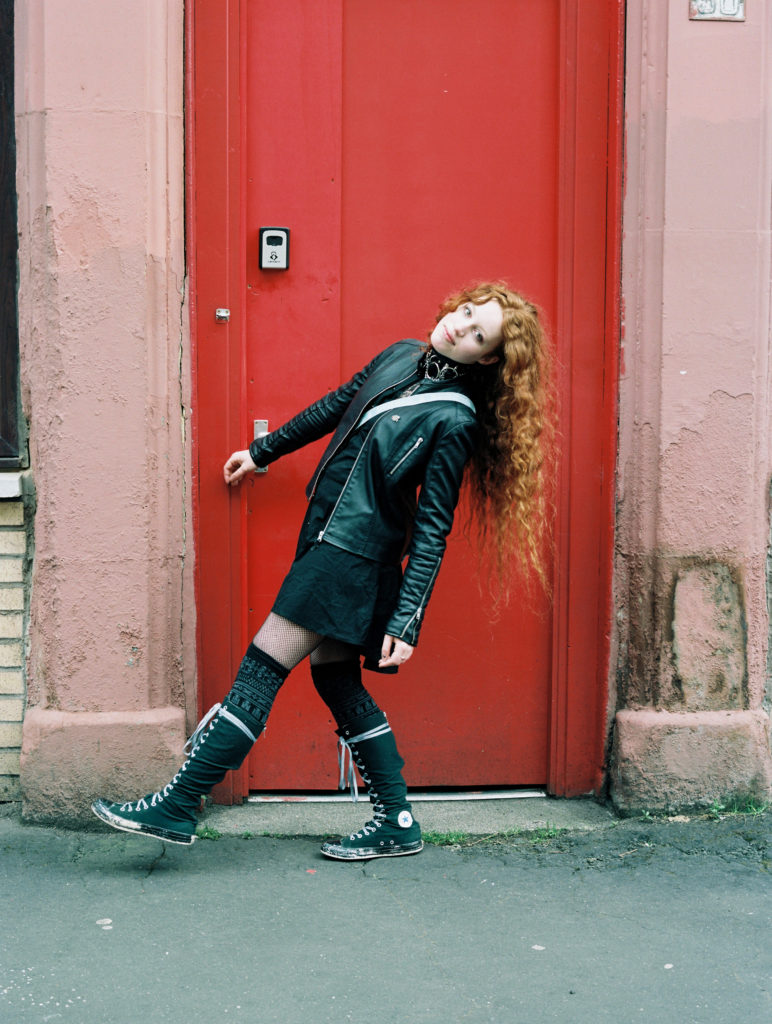
Dylan: How are you bringing forward this atmosphere with your current projects? At the moment you’re taking photos of bodybuilders, right?
Anna: Yeah. I’ve been taking photos of bodybuilders and asking them about their training. So when I first met these bodybuilders, I felt like I had a lot of practice in talking to strangers. First impressions are important, and it’s important to be nice. I sometimes put music on if they want. A bodybuilder I met recently had his own nineties bodybuilding playlist! It’s brilliant.
Nina: What kind of questions do you ask them?
Anna: They can be quite personal questions. I’ve been asking: what brought them into the bodybuilding world, what cycle of shredding or bulking they’re in, how many hours of training they do a week, what traits they think bodybuilders have, what kind of commitment it takes to be a bodybuilder.
Dylan: Have you found that there’s a particular question that gets grabbed onto?
Anna: There’s a common theme of meeting insecurity with empowerment. Generally these bodybuilders didn’t feel comfortable in their bodies when they were younger, and bodybuilding brings them a sense of empowerment. That’s the kind of thing I’m going for.
Dylan: Bodybuilding is quite an obsessive sport. Do you have your own obsession, Anna?
Anna: I’m obviously quite obsessed with cameras and looking at photos. But also fashion and fashion photography. I have a very big collection of clothes; I collect vintage clothing and I’m quite obsessed with car boot sales and secondhand stools and charity shops and sourcing some interesting garments.
Nina: I remember seeing that when you were taking photos for What’s your favourite outfit to dance in? and posting them on your Instagram, there was a fashion brand using your idea. What happened there?
Anna: It was a strange ‘coincidence’ where JW Anderson had contacted multiple people in the series and asked them to do some portraits outside their flats in JW Anderson clothing. It was at the same time I was doing the project. I spoke to the person organising the shoot and I said it’s quite similar to what I was doing and that she could have hired me. That would’ve given a student who’s studying a nice opportunity to get their work out there through a large fashion brand. I understand that these things happen. It’s the world of art design. I think in life, if you have an idea, people will like it if it’s a good one, and they might want to use it. So you just have to make your idea better.
Dylan: Did they run with it in the end?
Anna: No they didn’t, which is good. I think they went off to the Highlands or something.
Dylan: You spend a lot of time in the Highlands yourself, don’t you?
Anna: Yeah. I’ve got family up there, in Skye. I go on holiday to the Western isles every year, I love spending time there. The landscape is unparalleled.
Nina: Do you take a camera when you go?
Anna: When I’m on holiday, I try to be in the holiday mode. It’s good to separate your work and holiday time. But generally I’m always in photo-taking mode.
Dylan: The book launch is coming up soon. What are you hoping from it?
Anna: I’m trying to think of a location for it at the moment. I’m trying to think about a space that will be good for students. Where people can have a little dance. I might get some DJs who were in the series to play for the launch. Although I met everyone who’s in the book, not everyone has met each other, so I’m hoping that we can all come together. And of course, I want everyone to come in their favourite outfits to dance in.
Nina: Ah that sounds amazing, some of the outfits were incredible, I look forward to it.
Dylan: That’ll be great, Anna-Rose. Also, thank you so much for chatting to us today – it’s really appreciated.
Anna-Rose: No problem! It’s been lovely.
Find Anna-Rose on instagram and at her website: @annarosalita http://www.anna-rose.uk
Order the book at: https://www.anna-rose.uk/product/what-s-your-favourite-outfit-to-dance-in
